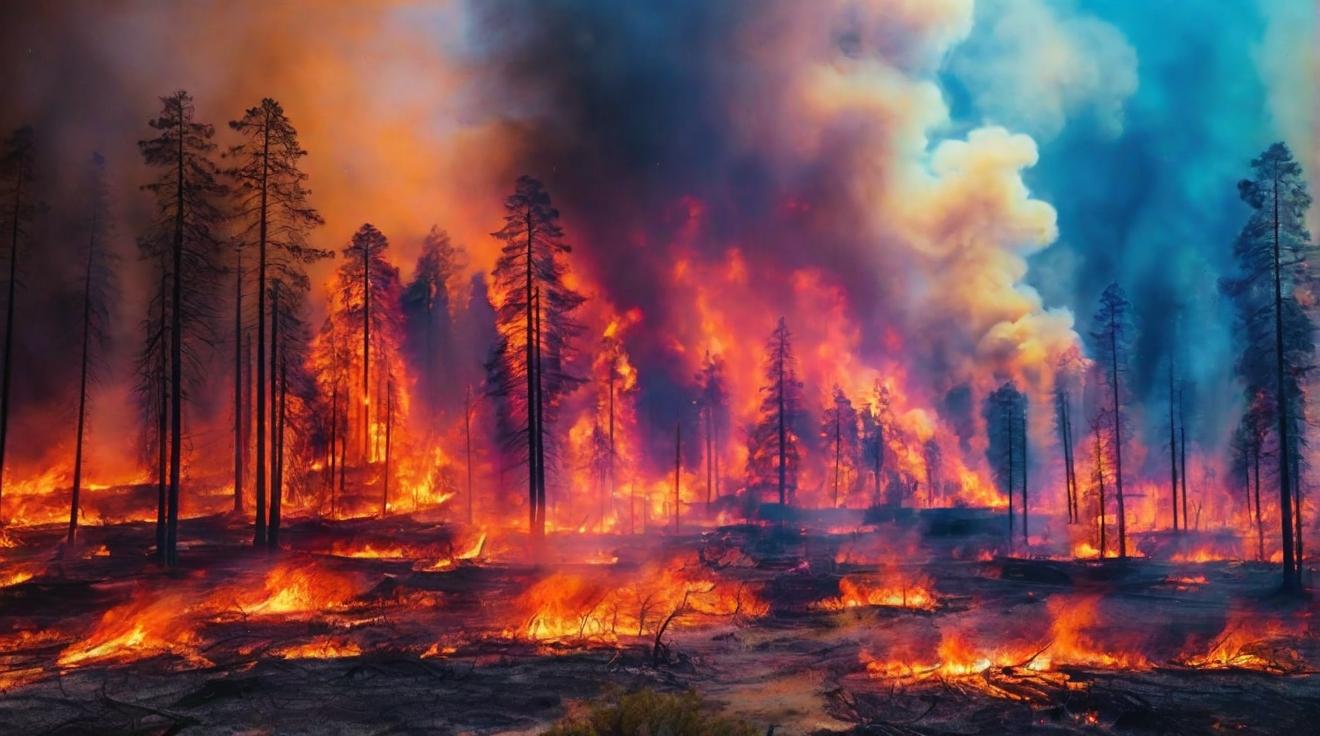Artificial Intelligence: A Game-Changer in Wildfire Detection and Climate Crisis Management
As the world grapples with the escalating challenges of climate change, artificial intelligence (AI) is stepping into the spotlight, showing immense promise in confronting some of the planet's most pressing environmental issues. Amidst rising concerns over AI's potential to displace jobs and fuel online bias, its role in environmental conservation, particularly in battling wildfires, is painting a more positive picture of this cutting-edge technology.
In Orlando, Florida, a pioneering weather forecasting company, MyRadar, is at the forefront of integrating AI with tiny satellites to enhance early wildfire detection capabilities. This innovative approach aims to revolutionize how we monitor and respond to natural disasters, offering a glimpse into the potential of AI in safeguarding our environment.
Revolutionizing Wildfire Detection with AI-Driven Satellites
MyRadar's ambitious project involves the deployment of a constellation of satellites equipped with advanced sensors and AI technology. These satellites are designed to detect the onset of wildfires sooner than ever before, providing critical data and warnings to first responders and those in affected areas.
Funded to support its mission, MyRadar plans to deploy satellites capable of delivering real-time fire alerts. This network will complement existing systems by offering more frequent and detailed observations, bridging the gap in current wildfire detection and response efforts.
The onboard AI technology, utilizing convolutional neural networks, is a pivotal component in this endeavor. These networks enhance the satellites' ability to promptly recognize wildfire outbreaks, bypassing the need for extensive ground-based data processing. This capability is continuously improved through learning, making the technology increasingly adept at spotting wildfires with remarkable accuracy.
Beyond Detection: AI's Role in Climate Mitigation and Adaptation
The use of AI in combating the climate crisis extends beyond detection and response to natural disasters. At the Lawrence Berkeley National Laboratory, AI-driven robots are at the helm of discovering new materials for improved battery technologies—a crucial component in the transition to renewable energy.
By analyzing vast amounts of scientific literature, AI algorithms are capable of uncovering insights that may elude human researchers. This ability to predict the properties of hypothetical compounds significantly accelerates the innovation process, reducing trial and error in the lab and paving the way for breakthroughs in green energy solutions.
Artificial intelligence, contrary to its portrayal as a menace in popular culture, emerges as a vital ally in addressing the formidable challenges posed by climate change. Its application in early wildfire detection and the development of sustainable technologies underscores AI's potential to not only mitigate the impacts of the climate crisis but also enhance our capacity for climate adaptation.
In summary, as the climate emergency unfolds, AI offers a beacon of hope, promising new tools and mechanisms to tackle intricate environmental challenges head-on. The integration of AI with satellite technology for wildfire detection and its role in advancing renewable energy solutions exemplify how artificial intelligence is becoming an indispensable part of our strategy to combat climate change and protect our planet for future generations.
Analyst comment
Positive news. The integration of AI with satellite technology for early wildfire detection and AI-driven robots for improved battery technologies shows promise in addressing climate change challenges. It enhances our capacity for climate adaptation and offers new tools to tackle environmental issues. This could lead to market growth in the AI and renewable energy sectors.













